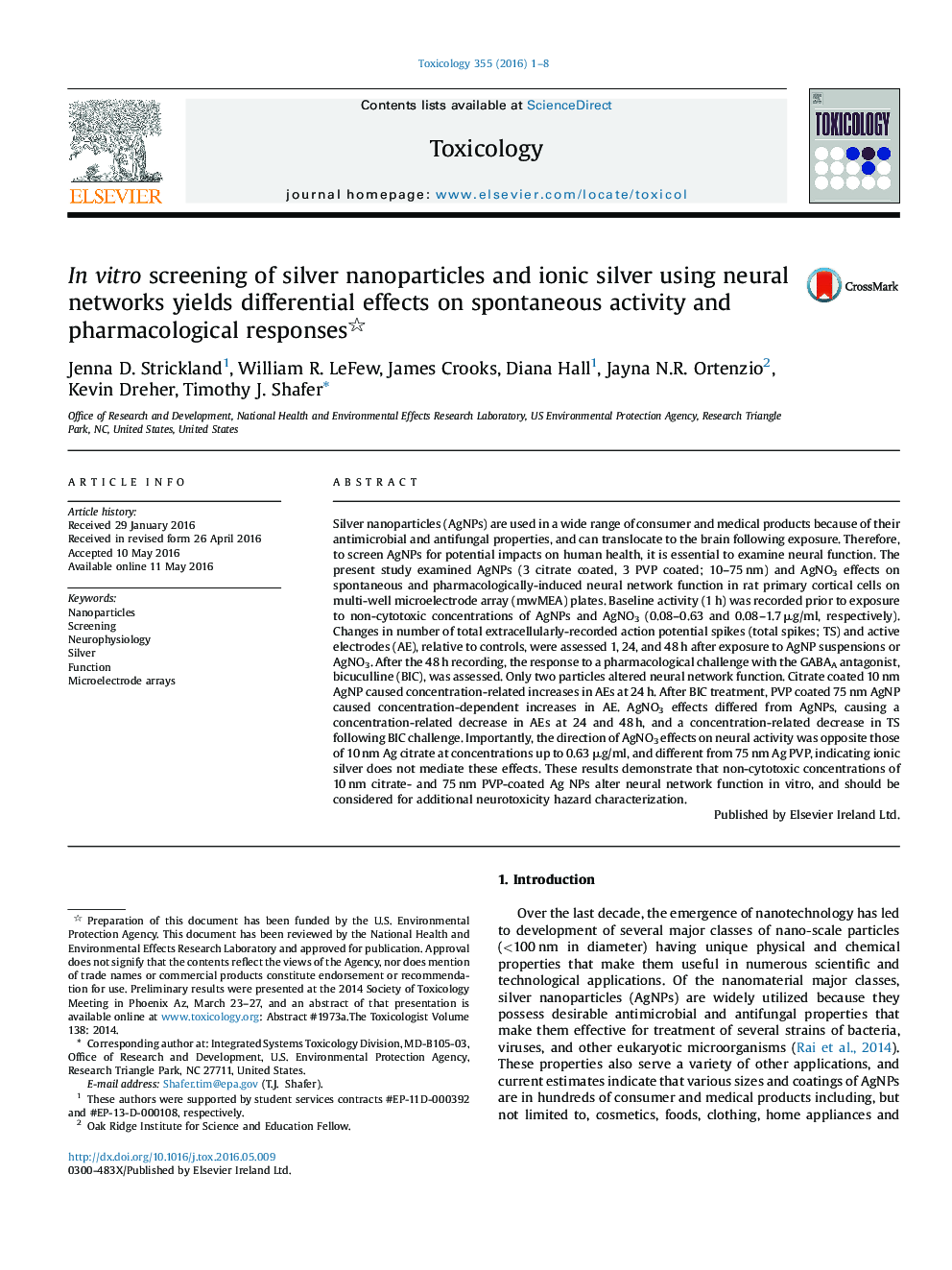| Article ID | Journal | Published Year | Pages | File Type |
|---|---|---|---|---|
| 5858928 | Toxicology | 2016 | 8 Pages |
Abstract
Silver nanoparticles (AgNPs) are used in a wide range of consumer and medical products because of their antimicrobial and antifungal properties, and can translocate to the brain following exposure. Therefore, to screen AgNPs for potential impacts on human health, it is essential to examine neural function. The present study examined AgNPs (3 citrate coated, 3 PVP coated; 10-75 nm) and AgNO3 effects on spontaneous and pharmacologically-induced neural network function in rat primary cortical cells on multi-well microelectrode array (mwMEA) plates. Baseline activity (1 h) was recorded prior to exposure to non-cytotoxic concentrations of AgNPs and AgNO3 (0.08-0.63 and 0.08-1.7 μg/ml, respectively). Changes in number of total extracellularly-recorded action potential spikes (total spikes; TS) and active electrodes (AE), relative to controls, were assessed 1, 24, and 48 h after exposure to AgNP suspensions or AgNO3. After the 48 h recording, the response to a pharmacological challenge with the GABAA antagonist, bicuculline (BIC), was assessed. Only two particles altered neural network function. Citrate coated 10 nm AgNP caused concentration-related increases in AEs at 24 h. After BIC treatment, PVP coated 75 nm AgNP caused concentration-dependent increases in AE. AgNO3 effects differed from AgNPs, causing a concentration-related decrease in AEs at 24 and 48 h, and a concentration-related decrease in TS following BIC challenge. Importantly, the direction of AgNO3 effects on neural activity was opposite those of 10 nm Ag citrate at concentrations up to 0.63 μg/ml, and different from 75 nm Ag PVP, indicating ionic silver does not mediate these effects. These results demonstrate that non-cytotoxic concentrations of 10 nm citrate- and 75 nm PVP-coated Ag NPs alter neural network function in vitro, and should be considered for additional neurotoxicity hazard characterization.
Related Topics
Life Sciences
Environmental Science
Health, Toxicology and Mutagenesis
Authors
Jenna D. Strickland, William R. LeFew, James Crooks, Diana Hall, Jayna N.R. Ortenzio, Kevin Dreher, Timothy J. Shafer,
